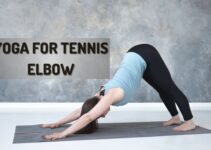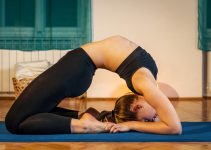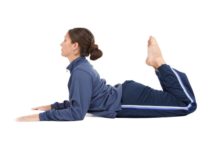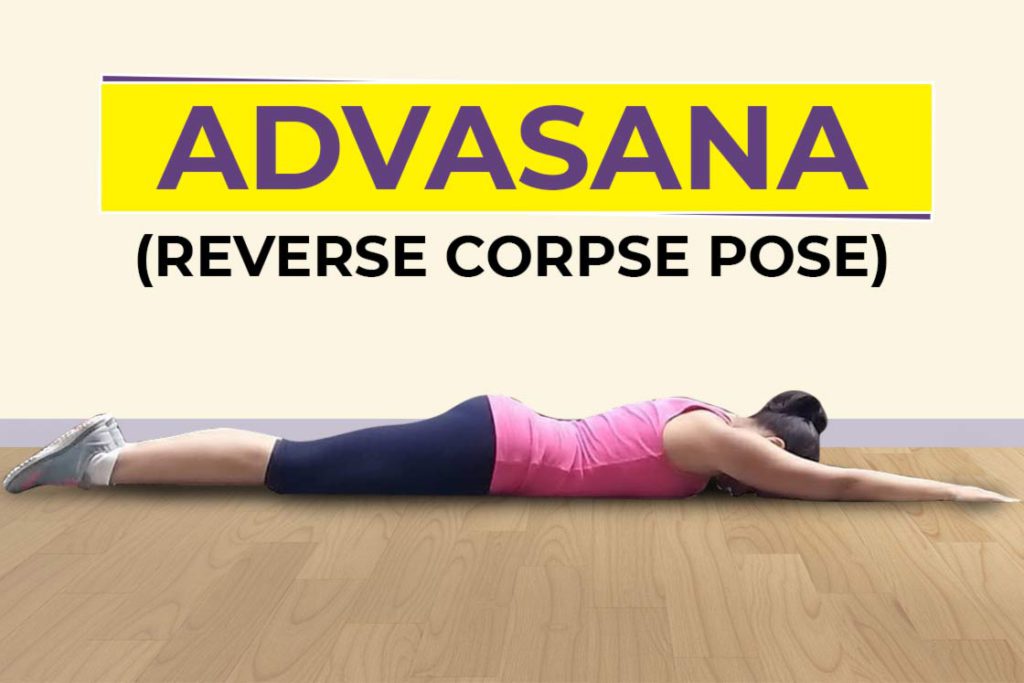
| Sanskrit Pronunciation | Advasana (Aad-vah-AHS-anah) |
| Meaning | Adva = prone / asana = pose |
| Pose Type | prone |
| Pose Level | beginner |
| Anatomy | Arms, shoulder, lower back muscles |
| Other Names | Reverse corpse pose |
Advasana is a beginner level restorative pose to relax the mind and body. This prone pose is usually performed after an intense yoga session, which helps in regulating the previous calm state of the body.
It is extremely necessary to provide the body with the required rest after participating in a rigorous physical session. Therefore, the posture Advasana brings certain changes into the excited state of the body that allows us to set up a deep state of peace and serenity.
Meaning
Advasana is the Sanskrit name that can be translated as ‘Adva’ means ‘prone’ and ‘asana’ means ‘seat or posture’. The position of the practitioner’s body in this asana depicts the opposite of the Corpse Pose (Shavasana) therefore it’s also called as Reverse corpse Pose.
Biologically, the Absence of respiration, pulse, and neural activity defines the body as dead or Corpse. This state of the body is similar to Advasana if observe from a distance. Therefore, The reverse corpse pose is the pose of a stillness where the practitioner is in a state of profound relaxation. Any physical movement might disconnect the one from hearing the sound of emptiness that is being filled with the help of Advasana.
Advasana Practice Guide
Follow the below practice guide to perform the Advasana;
Contraindications
- Due to the prone nature of Advasana it should be avoided by pregnant women.
- Patients with the condition of Inguinal hernia
Preparatory Pose
- Balasana (Child Pose)
- Shavasana (Corpse Pose)
- Adho Mukha Svanasana (Downward facing dog face)
- Eka Pada Adho Mukha Svanasana (One-legged downward facing dog)
How To Do Advasana (Steps)
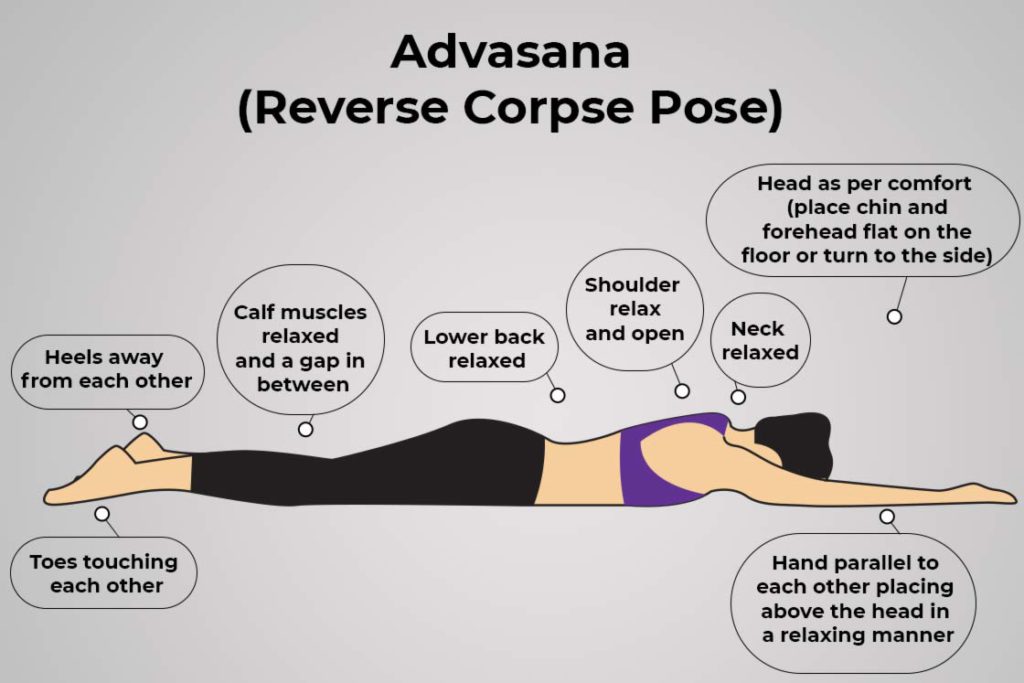
- Begin Advasana by sitting into Vajrasana (thunderbolt pose).
- From vajrasana, stretch your hands up overhead and start bending forward dragging your torso forward on the mat.
- Inhale and slowly raise hips from heels (in vajrasana) and straight your legs back. Here you’re in the completely prone position lying on your stomach on the floor. Legs straight and feet joining together.
- Stretch your arms overhead, palms facing downward and shoulder relaxed.
- Rest your forehead and chin flat on the floor. It can also be turned towards either side to absorb the relaxation from the pose.
- Now, your toes should be together and your heels are separated so that your calf remains relaxed. However, it also provides an ease to the back of the knees and the thighs, respectively.
- After closing the eyes, assume your body parts facing upside down. The sole of the feet, back of the knees, thighs, buttocks, lower back, upper back, back of the neck, and posterior portion of the head.
- From here, turn your awareness on to the breath and feel the contraction and relaxation of the abdominal region.
- After few minutes into the Advasana, bend the elbows and place your palms beside the chest. Turn the head, forehead, and chin on the floor.
- Afterward, lift the upper torso slowly and come into the sashankasana and then in the standing position, and relax.
Follow Up Pose
- Vajrasana (Thunderbolt Pose)
- Sukhasana (Easy Pose)
- Tadasana (Mountain Pose)
Precautions
By keeping the following points in mind one can practice Advasana in the rights manner. However, Practitioners performing this asana on their own are prone to mistakes than the ones who are learning g under a yoga teacher.
- The heel of the feet should be separated to free the body. Otherwise, heels touching each other cause calf and back of the thigh muscles to contract in order to maintain a balance in that position.
- The hands above the head should be relaxed. Avoid controlling them by leaving them as they are along with the natural curve in the palms.
- While returning from the Advasana avoid hurry lifting of the trunk. Go slow and steady here to attain the remaining awareness.
- Conscious breathing should be done while lying prone into the posture. One must allow the abdomen to contract and relax freely.
Beginner’s Tips
- Beginners should focus on breath while in the pose because disturbed inhalation and exhalation might lose the awareness from the breath. Ultimately, no relaxation to the body.
- Those who are unable to keep their head straight can turn their face to any of the side they feel comfortable with! Main aim is to dive into the deep relaxation.
- Practitioner with stiffened shoulder might find it hard to place their hands parallel above the head. One should not strain there and listen to the body here.
Props and Modifications
- If a practitioner is having difficulty in placing their forehead flat then, one place a piece of cloth to reduce the discomfort.
- Individuals with the condition of knock knees can place a set of blocks on the outside. This will protect the swaying of the knees towards either side.
- Difficulty in breathing while practicing Advasana is common in some practitioners, which can be assisted by placing a blanket or pillow under the chest. It allows less pressure on the thoracic region.
Variations
On changing hand and head positions in Advasana, it can be practiced in 2 variations; Head sideways and crocodile pose.
1. Reverse corpse Pose Head Sideways
Advasana requires the hand to be placed above the head whereas, in Reverse corpse Pose Head Sideways, they acquire the vicinity of the hips.
- Get into the posture by lying prone. Feet together, toes touching each other and heels apart.
- Your head should be turned towards any of the sides. Now, bring your hands beside the hips and palms facing upside.
- Loosen up your lower back, upper back, and shoulder blades and focus on breathing.
- Maintain the posture for 10 to 15 minutes and then come back by bringing hand under the shoulder. Slowly lift the torso and then in Shashankasana.
2. Crocodile Pose
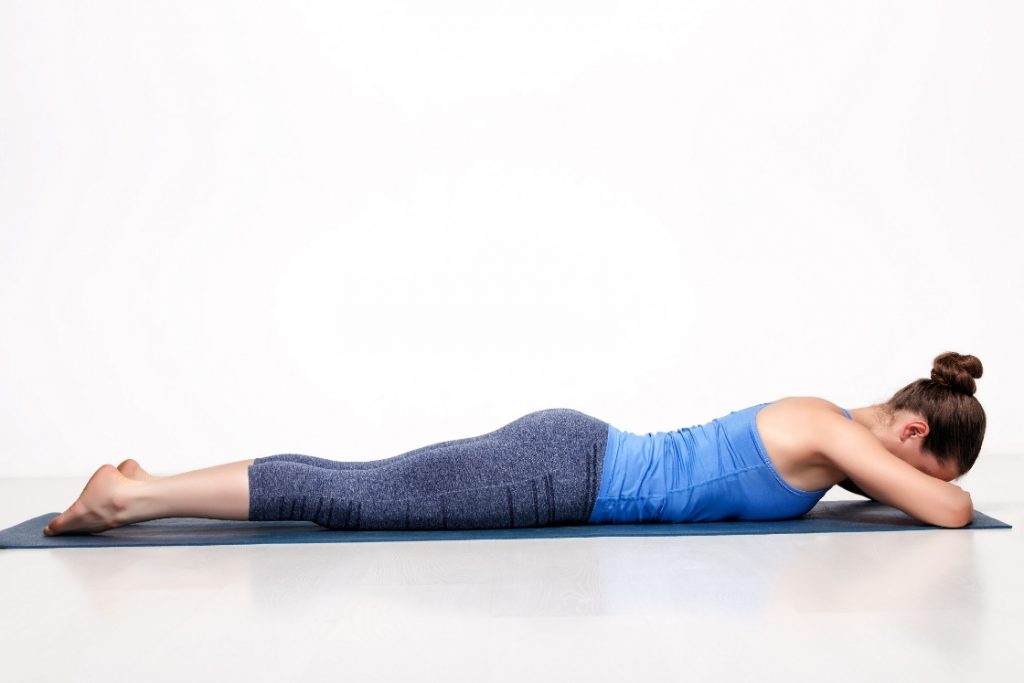
Hands in Advasana are parallel to each other placing above the head and there is also less gap between the calves. However, In Crocodile Pose, the hand needs to cross under the head with more gap between the calves than in Advasana, respectively.
- Begin by lying prone on the mat. Crossed your hand to place the forehead on it.
- Your heels to the outside and toes touching each other. Afterward, close your eyes and breathe deeply to feel the relaxation of the pose.
- Maintain here for 10 to 15 minutes and then bring back your hands under the shoulder. Now, Press against the floor to lift the body slowly into Shashank asana, then relax.
Advasana Benefits
The restorative mechanism of Advasana stimulates the parasympathetic nervous system. You can get the following benefits from Advasana;
1. Tackle stress and anxiety
Unable to personal space cause mental instability that becomes the reason for Stress and anxiety. Advasana practice takes a practitioner into the deep relaxation state where the body regenerates the bank of energy that tackles the cause of very stress and anxiety.
2. Loosen up entire back
Breakdown of protective cartilage and strain in the ligaments results in the condition of osteoarthritis that further causes stiffened back. However, regular practicing Advasana loosens up the muscles by allowing them to relax for a longer period.
3. Promotes Digestion
The conscious breathing while lying prone in this asana contracts and relaxes the diaphragm that rushes the digestive organs back and forth. Such movements of concerning organs improves the functioning of the digestive system.
4. Stimulates Manipura Chakra
Conscious breathing in this pose has a stimulation effect over the naval region, which is the seat for the Manipura Chakra . Regular practice along with the right technique activates the concerning chakra. This further balances the digestion process in the body.
5. Detoxify Abdominal Organs
Our body serves as a home for various organ systems that collaborate to sustain our life. When waste accumulates and blocks these systems, it can lead to health issues. Advasana, known for its preparatory benefits for poses like Bhujangasana, provides a gentle massage to the abdominal organs, aiding in detoxification and revitalizing them with fresh energy.
6. Relaxes entire body
Advasana or the reverse corpse pose makes the practitioner behave like dead but with awareness and conscious breathing. The remains free-floating as one reaches the deepest layer of relaxation in this asana. Hence, calms the entire body.
Conclusion
Advasana is the restorative posture with multiple benefits that not only relaxes the entire body but regulates the functioning of various system in the body.
It can be easily practiced by lying prone on the mat that takes you into the universe of calmness and tranquility.
